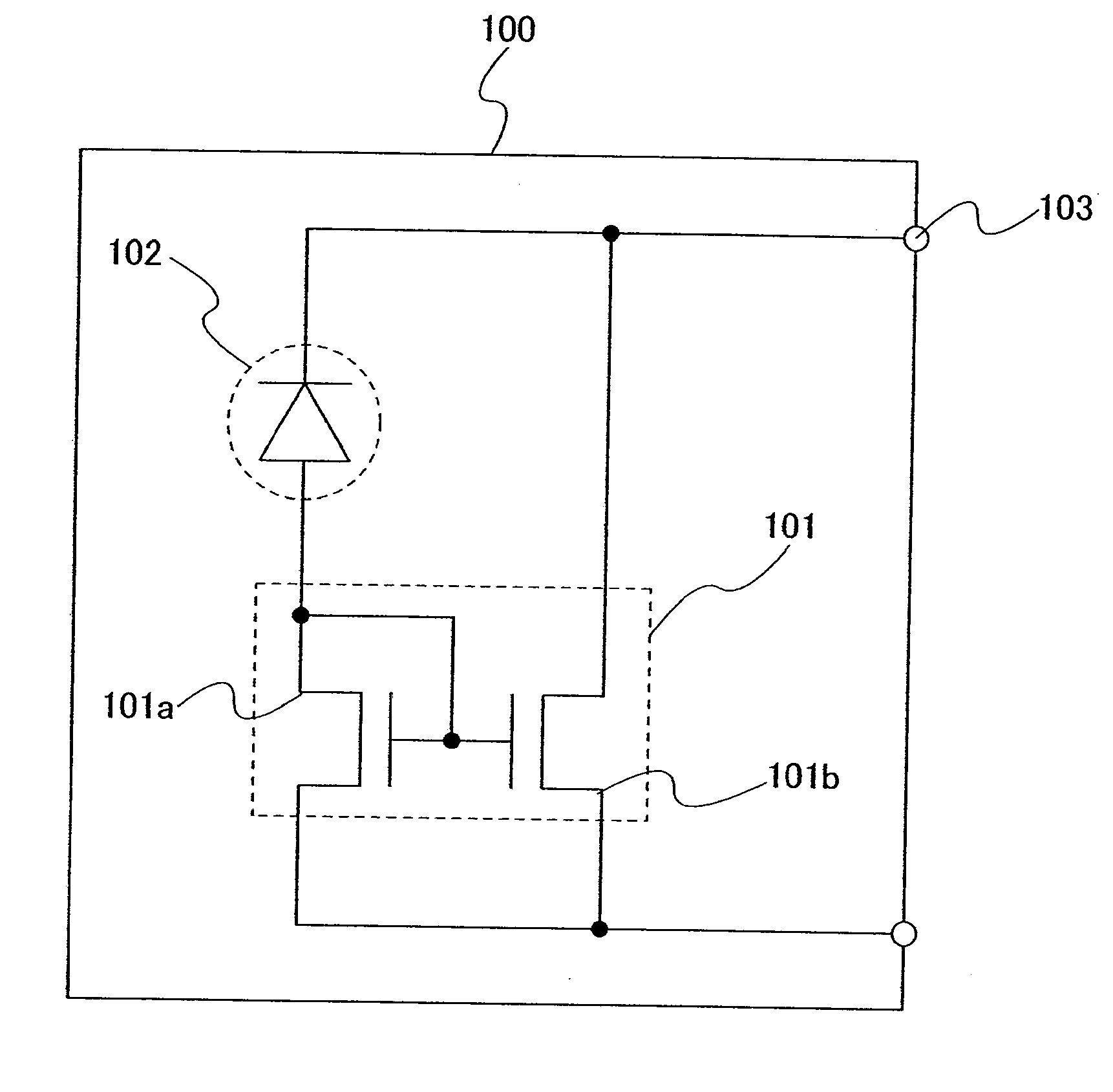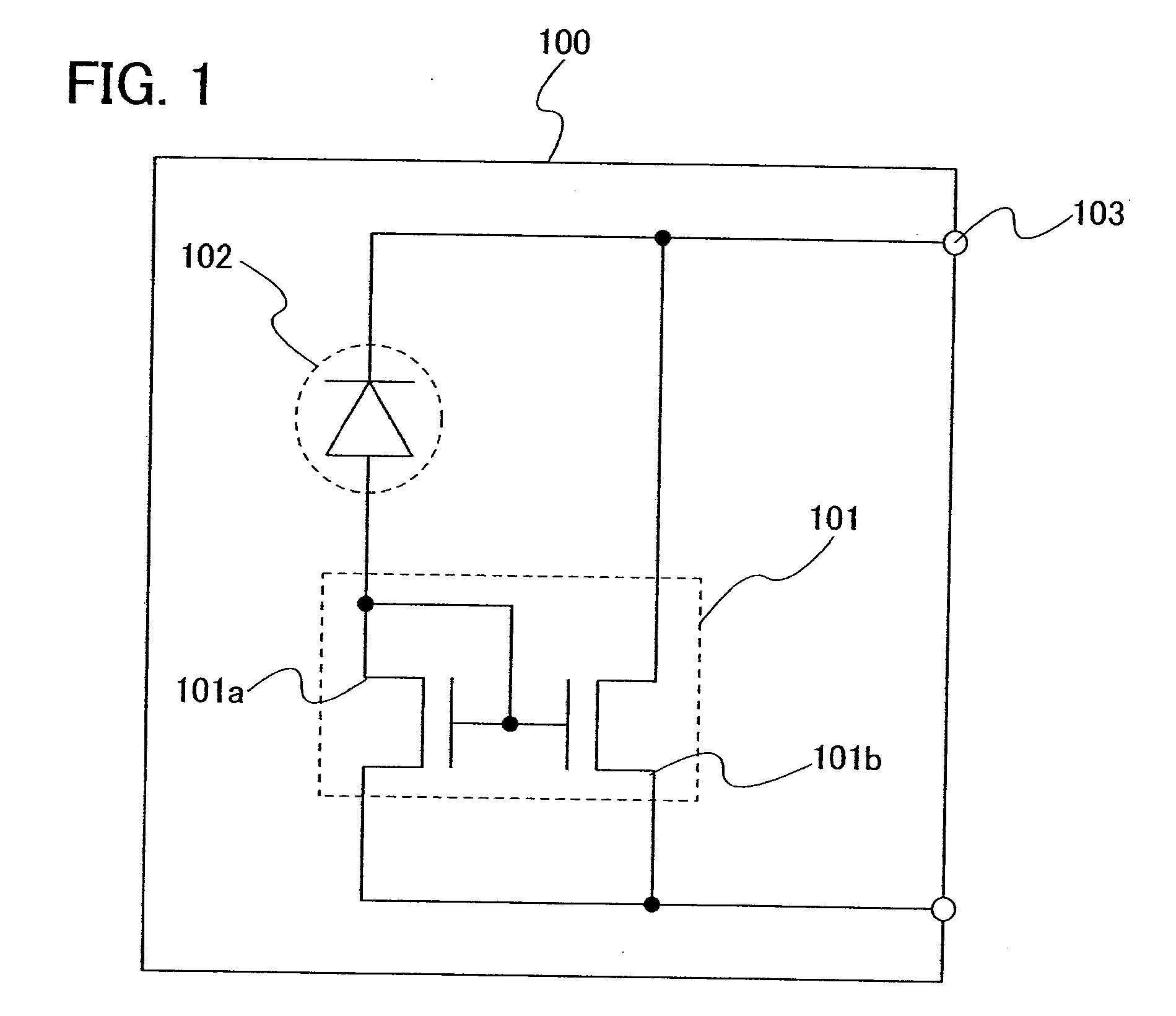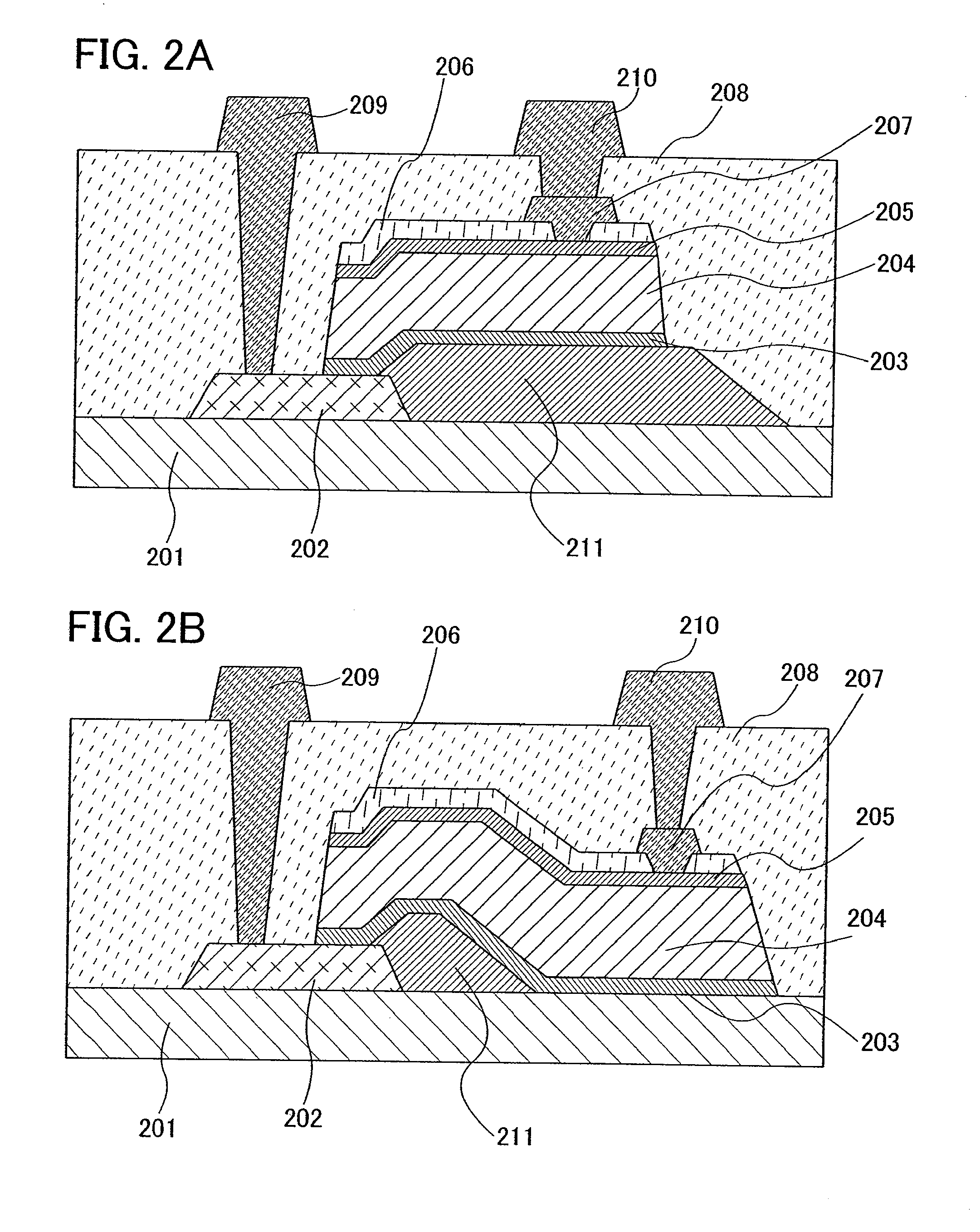Photoelectric conversion device
a conversion device and photoelectric technology, applied in the direction of semiconductor devices, diodes, electrical apparatus, etc., can solve the problems of deterioration of operation characteristics, and achieve the effect of improving reliability and reducing character deterioration
- Summary
- Abstract
- Description
- Claims
- Application Information
AI Technical Summary
Benefits of technology
Problems solved by technology
Method used
Image
Examples
embodiment 1
[0046] In this embodiment, one example of a photoelectric conversion device using a thin film transistor and a photodiode will be explained.
[0047] In a photoelectric conversion device shown in this embodiment, a photodiode and an amplifier circuit that is formed by a thin film transistor are formed in an integrated manner over a same substrate. FIG. 1 shows one example of a configuration as a circuit diagram. This photoelectric conversion device 100 is provided with an amplifier circuit 101 that amplifies output of a photodiode 102. Various circuit configurations can be applied to the amplifier circuit 101. In this embodiment, a current mirror circuit is formed by a thin film transistor 101a and a thin film transistor 101b. Source terminals of the thin film transistors 101a and 101b are each connected to an external power supply GND. A drain terminal of the thin film transistor 101b is connected to an output terminal 103. The photodiode 102 may be provided with a pn junction, a pin...
embodiment 2
[0065] In this embodiment, in order to improve reliability of a photoelectric conversion device, an example of manufacturing a photoelectric conversion layer by protecting an edge portion of an electrode by a protective film after forming a thin film transistor will be explained with reference to FIGS. 4A to 4D, and FIGS. 5A to 5C. It is to be noted that the same portion with that in Embodiment 1 is denoted by the same reference numeral, and the photoelectric conversion layer may be manufactured based on the manufacturing step described in Embodiment 1.
[0066] In FIG. 4A, the electrode 403 is etched to form the electrode 404. At this time, a shape of an edge portion of the electrode 404 may not be a taper shape; however, by making the edge portion have a taper shape, coverage of a protective film 412 formed afterwards can be improved.
[0067] Next, the protective film 412 is formed from polyimide (refer to FIG. 5A). In this embodiment, the protective film is formed so as to transmit ...
embodiment 3
[0071] In this embodiment, in order to improve reliability of a photoelectric conversion device, in a case where a photoelectric conversion layer is manufactured by protecting an edge portion of an electrode by a protective film after forming a thin film transistor, an example of changing a pattern of the protective film will be explained with reference to FIG. 5C and FIG. 6A. It is to be noted that the same portion with that in Embodiment 2 is denoted by the same reference numeral, and the photoelectric conversion layer may be manufactured based on the manufacturing step described in Embodiment 2.
[0072] The protective film in FIG. 5C can be formed only on the periphery of the electrode 404 (refer to FIG. 6A).
[0073] By utilizing this embodiment, the photoelectric conversion layer can be used even when the protective film has no light transmitting property. In addition, light transmittance is increased, and then, efficiency of photoelectric conversion can be enhanced. Moreover, ope...
PUM
 Login to View More
Login to View More Abstract
Description
Claims
Application Information
 Login to View More
Login to View More - Generate Ideas
- Intellectual Property
- Life Sciences
- Materials
- Tech Scout
- Unparalleled Data Quality
- Higher Quality Content
- 60% Fewer Hallucinations
Browse by: Latest US Patents, China's latest patents, Technical Efficacy Thesaurus, Application Domain, Technology Topic, Popular Technical Reports.
© 2025 PatSnap. All rights reserved.Legal|Privacy policy|Modern Slavery Act Transparency Statement|Sitemap|About US| Contact US: help@patsnap.com



